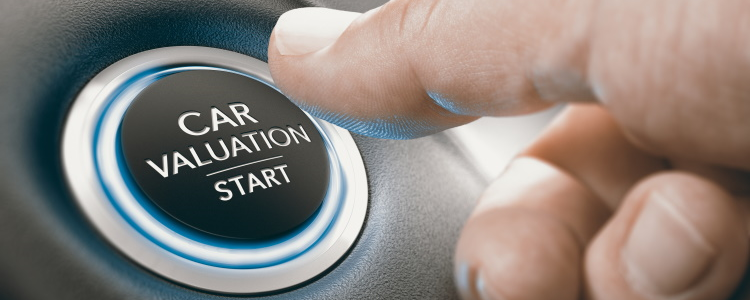There's a lot to consider when you're ready for your next vehicle and have a car to trade in. How you prepare can affect how much money you’ll get for your trade-in, but looking at our trade-in dos and don’ts can help you out.
Car Trade in Dos
These helpful hints can make the trade-in process go more smoothly and help you land an offer you're satisfied with. Do…
 Research Your Trade-in Value – You're going to want to get a sense of the value of your trade-in before visiting a dealership. This can be done online by entering your car's information on vehicle valuation websites like NADA Guides. You can get a better idea of what is and isn't a fair offer so you can strike a deal that you're satisfied with.
Research Your Trade-in Value – You're going to want to get a sense of the value of your trade-in before visiting a dealership. This can be done online by entering your car's information on vehicle valuation websites like NADA Guides. You can get a better idea of what is and isn't a fair offer so you can strike a deal that you're satisfied with.- Bring in Service Records – Another good idea is to gather up all service records you have and put them in a folder to bring to the dealership. If you've kept up with maintenance, this shows dealers you've taken good care of the car and it can increase the resale value.
- Clean it Inside and Out – Making your vehicle look good can help it make a great first impression. Get it ready by washing the outside and cleaning the wheels. You should also vacuum the interior, remove all belongings, clean the windows, and wipe down all surfaces.
- Get Multiple Appraisals – Getting multiple appraisals for your trade-in is one of the best tips to get the most for it. What one dealer offers may be way different from another, because it depends on so many different factors, like their current inventory and supply and demand. Plus, you can use competing offers as a negotiating tool.
- Get a Same-make Dealer Trade-in Appraisal – Make sure one of the dealerships you get your vehicle appraised at sells the same brand as your trade-in. A same-make appraisal may result in a better offer because these dealers usually want to stock your car more than others.
- Understand Depreciation – You can also research what's known as the depreciation curve to identify the ideal time to trade in your car. Vehicles constantly depreciate in value, but the drop off is steeper in the first year of ownership and again around year six and seven. You can maximize the value you receive by getting good use out of you car and then trading it in before that sharp drop in value around year six.
Vehicle Trade in Don'ts
Avoiding these potential mistakes can help make sure you don't run into any problems. Don't…
- Overestimate Your Car's Condition – What your vehicle is worth depends on many factors like its age, mileage, equipment, popularity, and condition. A common mistake people make is overstating the shape their car is in, but doing so can give you the wrong idea of what it's worth, so make sure you remain realistic.
- Get Your Vehicle Detailed – You shouldn't detail your car before trading it in. While cleaning it up is a good idea, it's unlikely that you'll make back the money you spend having it detailed with any increase in what you're offered. Most authorities agree that this simply won't make that much of an impact.
- Make Expensive Repairs – Many car buyers wonder if they should trade in a car with mechanical problems or get them fixed beforehand. The general answer is to avoid spending a lot of money fixing up your vehicle. Similar to the detailing dilemma, it's unlikely you'll recoup the cost of major repairs with an increased trade-in value. This is because dealers typically have the ability to make repairs at a lower cost than you. Feel free to make small fixes that aren't going to cost you too much out of pocket, like fixing windshield chips that are covered by your insurance. But for expensive repairs, you're usually better off leaving it as is.
- Trade in With Negative Equity – If you still owe on your car, but what you owe is more than what your vehicle is worth, you're upside down and have negative equity. You shouldn't trade in a vehicle when you're upside down because you either have to cover the difference between what you owe and what it's worth or roll it into the new loan. Rolling over negative equity raises the cost of your loan because this increases your monthly payments and overall interest charges. It also means you instantly have more negative equity in your new vehicle, so it can trap you in an increasingly dangerous cycle.
- Discuss Your Trade-in Until the End – Most car buying authorities agree that you shouldn't mention your trade in until the end of the negotiation process. This allows you to focus on the purchase price of the new car first, and then, separately, coming to an agreement on a fair price for your trade-in.
The Bottom Line
If you follow these tips and avoid making some common mistakes when trading in a vehicle, you can set realistic expectations and tackle the process with confidence.
If you're ready to head to a dealer, but your credit is making you worry, let Auto Credit Express assist you. We can match you with a local special finance dealership that knows how to handle challenging credit situations. Start the process right now by submitting our auto loan request form online.
















